Easter Customs
Few words
‘Kalo Pascha’ Happy Easter in Cyprus!
Easter Sunday (Orthodox) – 05 / 05 / 2024
Easter time in Cyprus is a wonderful period to be on the island. The spring sunshine ushers in the sprouting of verdant flora and fauna, meadows sprout forth with poppies, golden daisies, and carpets of anemones that signify the arrival of Easter. Pascha (Holy Easter) is the most important celebration in the Orthodox Ecclesiastical calendar.
…
Easter in Cyprus is a joyous time of year. Cypriots welcome strangers with their renowned warmth and friendliness to join in the fun as Eastertime is the largest festive period in the Greek Orthodox calendar year.
Pascha, the most luminous feast of Christianity and the greatest feast of Hellenism and the people of Cyprus, who call it, “Lambri”, “the Bright One” since it shines with the light of.
Resurrection that bathes life and all its facets: morals, customs and tradition. As the Services of Holy Week coincide with Spring, the divine Passions seem to relate to the passions and resurrection of Nature and man. It is, after all, the time to bid farewell to the long and absolute silence of Nature, to the agonising period of gestation in anticipation of welcoming the fruits, the flowers: of orange, pomegranate, rose, yarrow, lilly and the colours.
Everything predisposes the great triumph of life, renewed life, the redemption of the living, the Resurrection of the dead as descriped in the triumphant Paschal hymn.
This is the message of the spiritual extravaganza of these days, from Lazarus’ Saturday until Pascha Sunday. A ritual that narrates the divine Passion and relates to the tribulations of the suffering man, that culminates with Resurrection, depicted in byzantine iconography as the “Descent to Hades” by Christ, where the Resurrected Christ gives His hand to Adam, to raise him up and set him free from the bondage of death.
Pascha, the Majestic Feast in the Heart of Spring “and so shall bloom
the spring of faith” in our hearts
the spring of faith” in our hearts
Holy Week
-
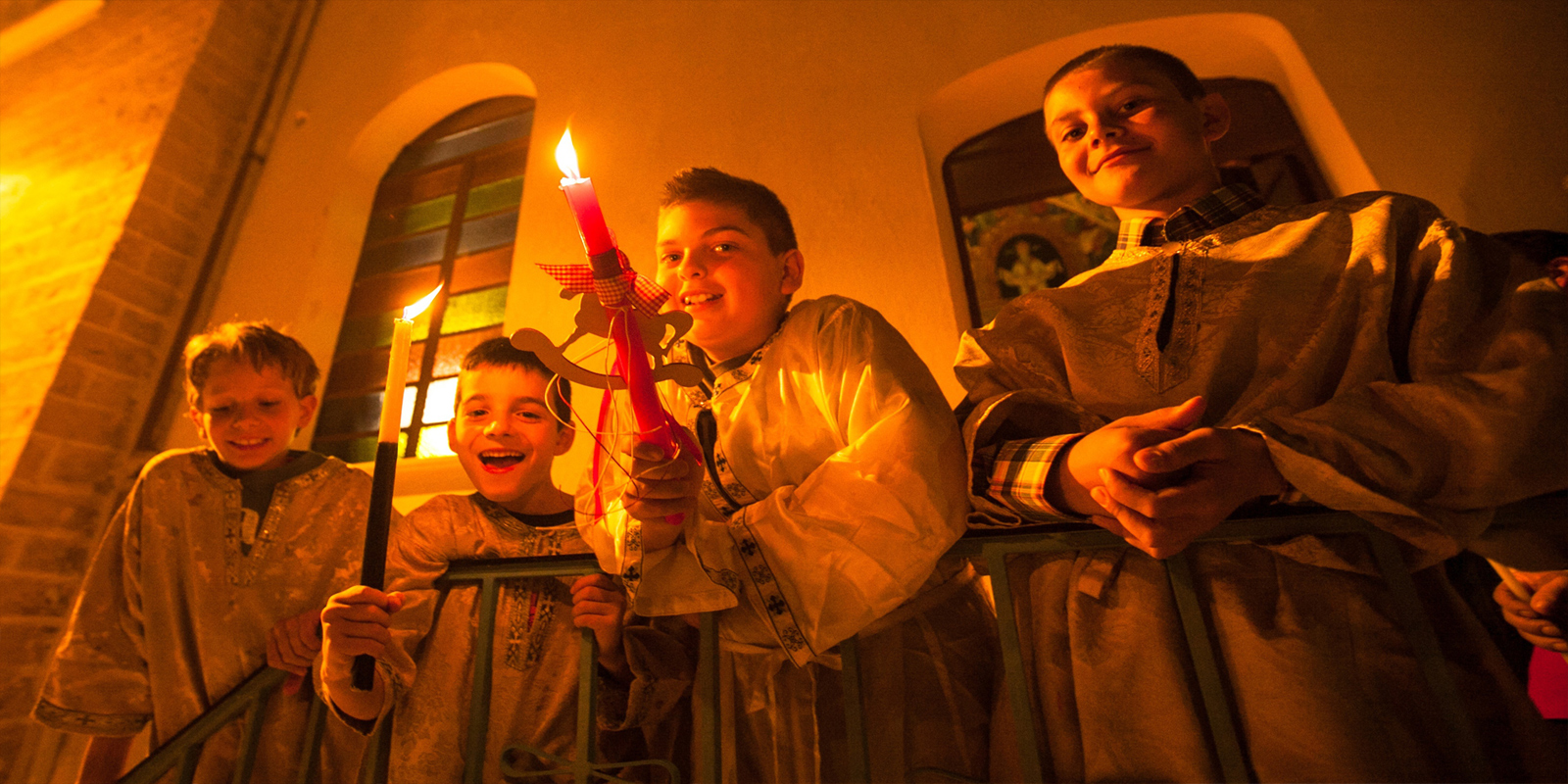
Lazarus Day
& Palm SundayThe path to Pascha begins on Lazarus Saturday. On Palm Sunday in the morning Liturgy, all the faithful take to the church olive branches in remembrance of the olive branches carried by the crowd of Jerusalem during Christ’s welcome to the city.In the evening of Palm Sunday the faithful come to the church to witness the Service of the Bridegroom that initiates the Holy Week. In a solemn atmosphere and after putting out all lights in the church, the icon of Christ comes out, depicting Him wearing a red tunic, a crown of thorns and holding a cane in His tied hands, a unique depiction of Utter Humiliation.
-

Holy Monday,
H. Tuesday &
H. WednesdayThe next three days, Great and Holy Monday, H. Tuesday and H. Wednesday every morning and evening long Services are celebrated. On Holy Tuesday evening the Troparion written by the nun Agia Cassiane is chanted in all churches for the repented whore who washed with myrrh the feet of Christ. On Holy Wednesday the sacrament of Holy Unction is served. -
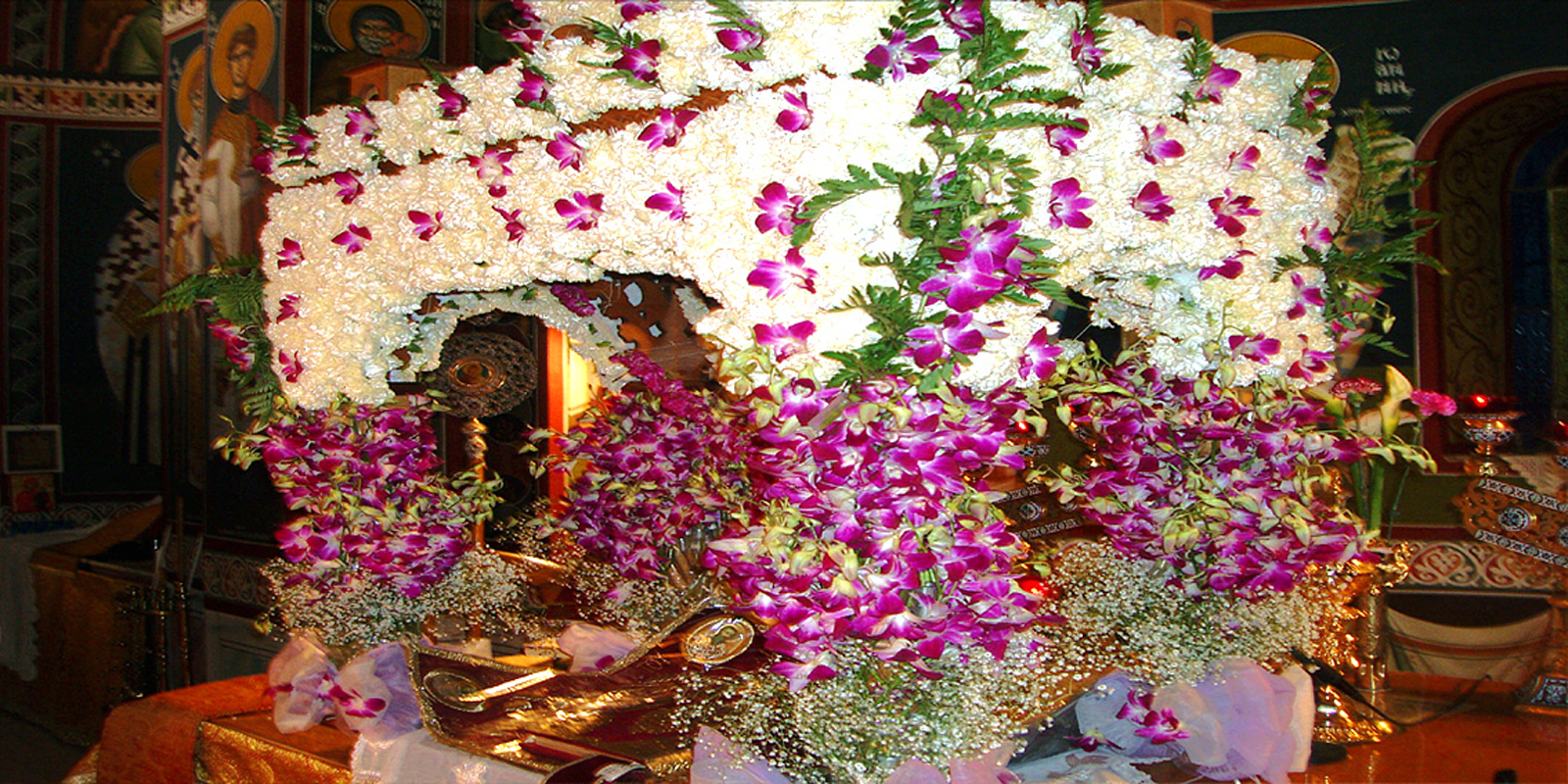
Holy Thursday
& Holy FridayOn Holy Thursday morning, the Holy liturgy in memory of the Last Supper is celebrated. All the housewives clean their homes, prepare the stavrokouloura (cross-shaped buns) and dye their eggs red. In the evening of Holy Thursday the Service of the Passion is chanted, a lengthy Service enacting the Crucifixion of Christ and the twelve Gospels are read out.
-
Read more
On Holy Friday in the morning the Un-nailing takes place, that service during which Joseph from Arimathea and Nicodemus, the nocturnal disciple of Christ, removed His Body from the Cross and laid It in the grave. After this Service, girls in all churches decorate with flowers the Epitaph. This is one of the most beautiful customs in all Cyprus. In the evening, lamentations are chanted (short troparia) to the dead Christ and then the Epitaph is carried in litany through the streets of cities and villages while the church bells toll in a mournful tone.
-
Read more
-
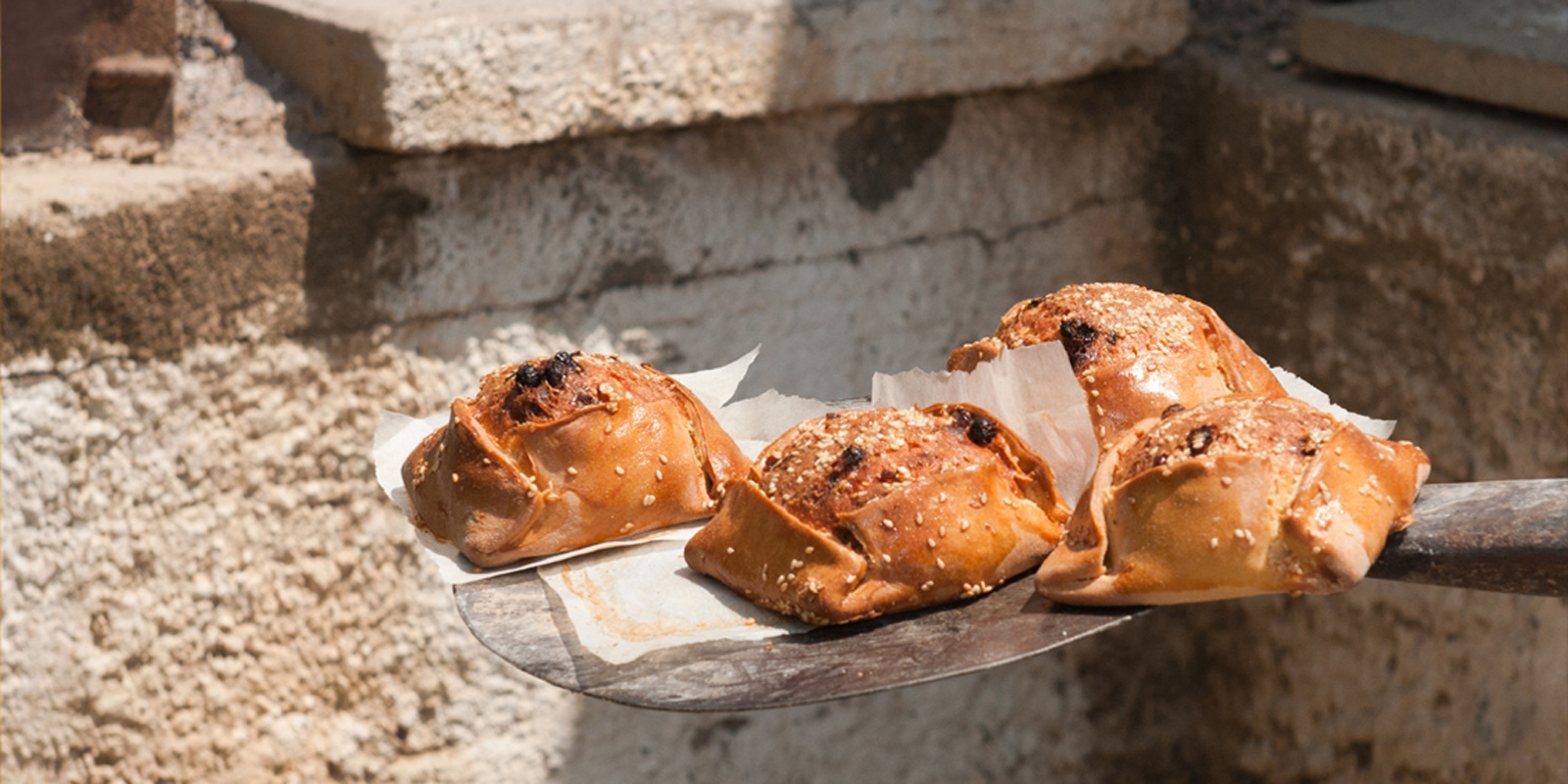
“Paschalogiorta”
“Paschalogiorta” comprises many customs that are preserved in Cyprus to this day. The main ones are the red eggs, avkotes (bagels or buns decorated with eggs) and flaounes (special cheese pies).-
Read more
Avkotes. Very characteristic of Easter baking are the various types of bagels or buns decorated with one or more red eggs. On Holy Thursday buns and avkotes (bread-cup) were baked and eggs were dyed usually in red but sometimes in yellow. The traditional way of dyeing eggs was with onion leaves, yellow daisies, yarrow, with special seaweeds, various roots such as wild rubia also known as rizari, which were thrashed and boiled in water.
Flaounes. Holy Saturday in all of Cyprus is dedicated to kneading and baking the Easter food par excellence, the flaounes (cheese pies). Flaounes are intricately linked with Easter in Cyprus as the relevant cypriot proverb goes «no flaounes before Easter, no dowry before the wedding». The preparation for kneading the flaounes started on Holy Friday. The grated cheese was mixed with eggs, after adding proportionally the leaven, mastic, mahlep, black raisins and fresh mint. This knead is called foukos or fokos and was kneaded following a ritual. The leaven was added in a crosslike fashion to the flour at five points, as many as the nails hammered in the body of Christ.
-
Read more
-
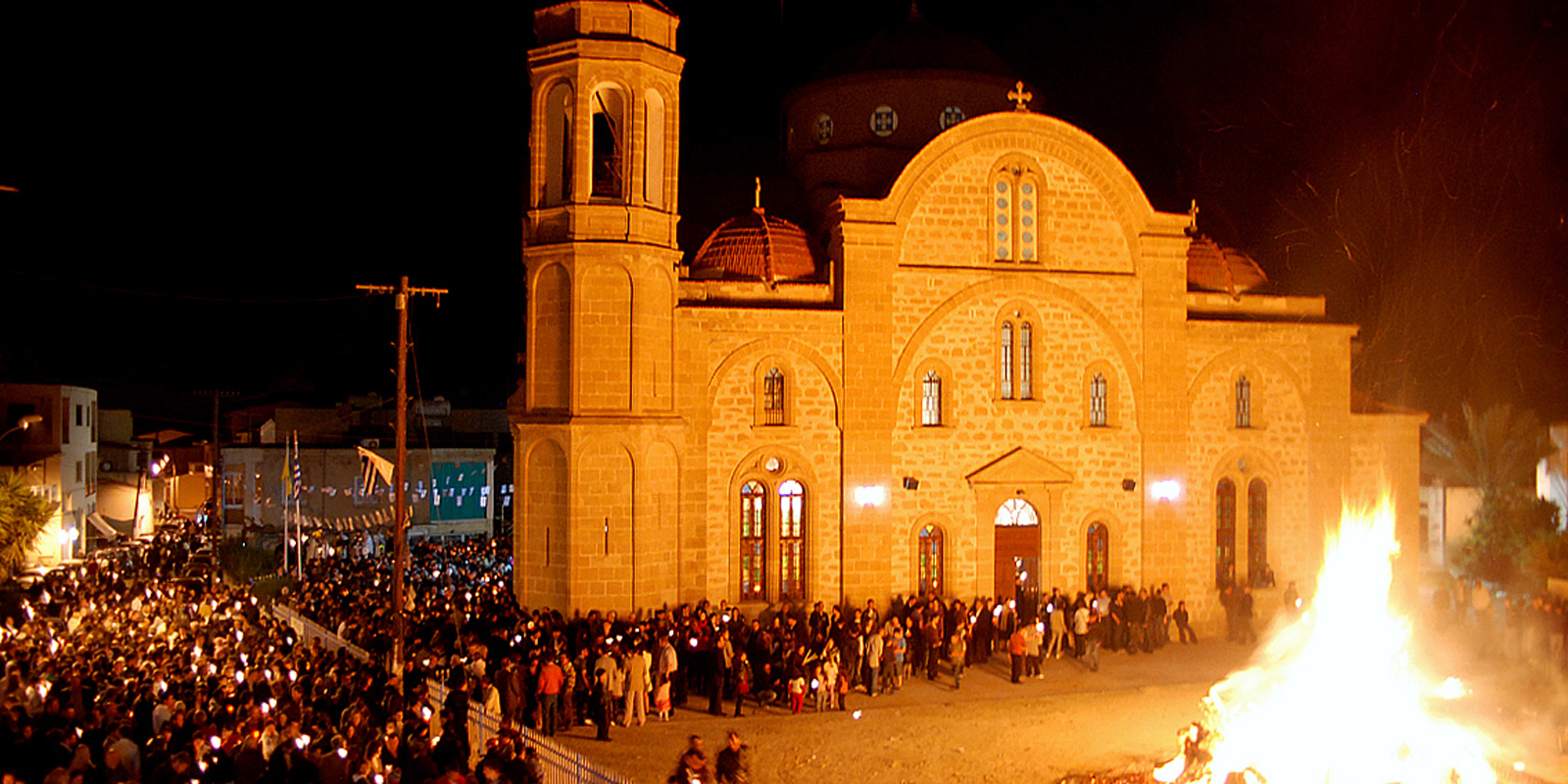
Holy Saturday
On Holy Saturday morning, during the matinal Holy liturgy, the so called “first Resurrection” takes place and in Cyprus it is celebrated in a special way. The black veils covering the icons during the Holy Week drop, the priests throw laurel leaves and myrtle to the floor, the faithful bang their pews, the bells toll merrily and the general mood is triumphant.-
Read more
In the evening of Saturday, at midnight, the Holy liturgy of Resurrection (the “Good Word”) is held in the courtyard of churches. A huge bonfire is lit in the churchyard to burn Judas, the apostle who betrayed Jesus and if you are out and about you will see many fires all over Cyprus. There will be a few fireworks too so the night sky will be ablaze, a bit like bonfire night.
-
Read more
Easter Celebrations
-

Easter Sunday
On Pascha Sunday the Vespers of Love are celebrated. All families roast on coal lamb on a spit or bake lamb in the oven, crack the red eggs and feast in large family groups. Easter Sunday is when the celebrations really begin. Feasts of souvla (large pieces of lamb or pork, or chicken are cooked on an open charcoal fire), salads, cakes, sweets, and alcoholic beverages are also on the menu! The smell of outdoor barbeques infuses the whole island! Lamb is the main traditional Easter meal as the early Christians adopted this custom from the ancient Jews who sacrificed lambs for their Passover celebrations. -
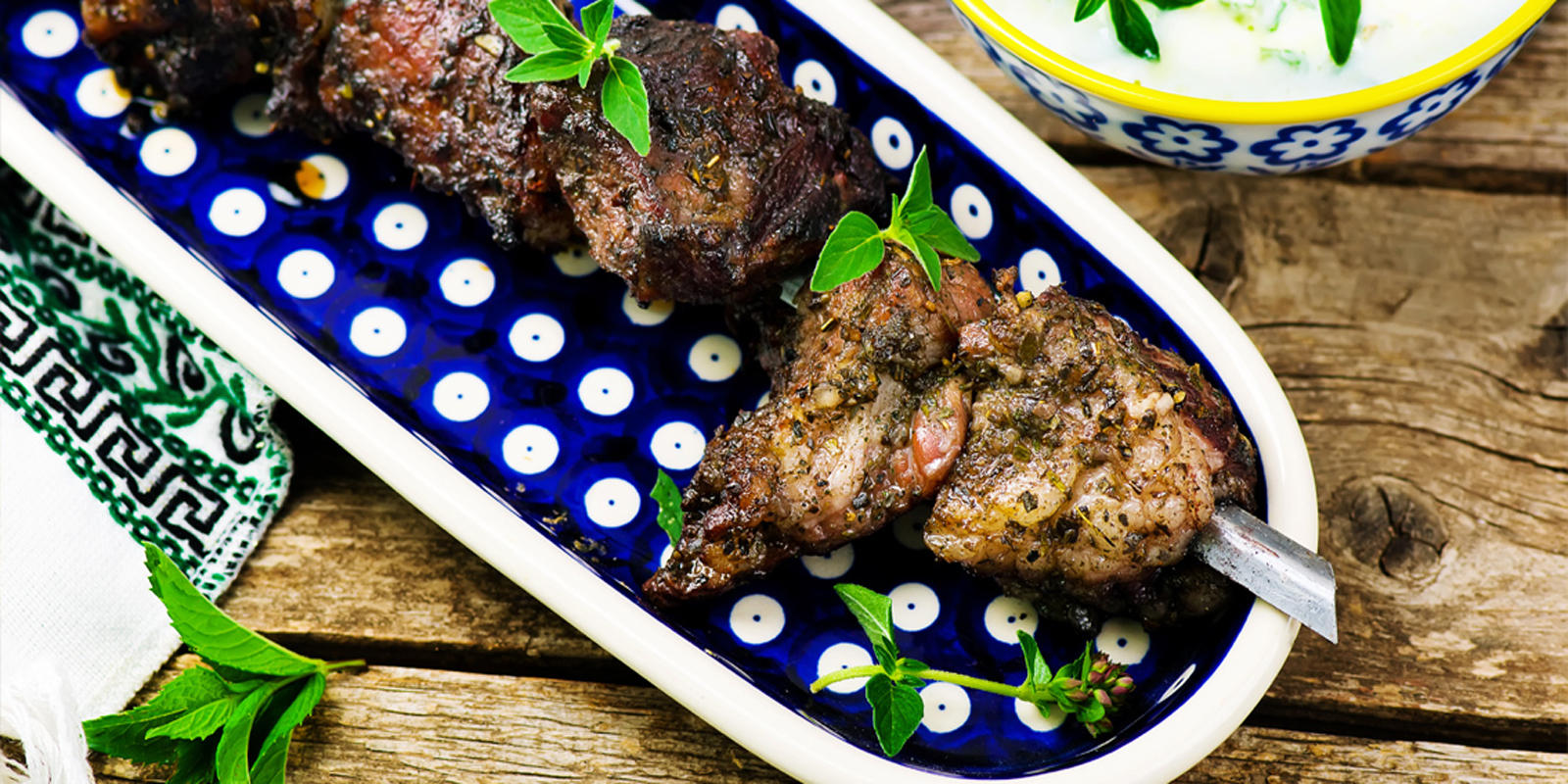
Feasts of Souvla
Easter Sunday is when the celebrations really begin. Feasts of souvla (large pieces of lamb or pork, or chicken are cooked on an open charcoal fire), salads, cakes, sweets, and alcoholic beverages are also on the menu! The smell of outdoor barbeques infuses the whole island! Lamb is the main traditional Easter meal as the early Christians adopted this custom from the ancient Jews who sacrificed lambs for their Passover celebrations.
Christmas Customs
Few words
Ah, it is “kourabiedes” time, and the sweet aroma of “melomakarona” cookies will soon be filling Cypriot kitchens worldwide.
At the beginning of December we decorate a Christmas tree which has become one of the most beloved and well known holiday symbols. We also hang Christmas stockings for ”Santa Claus” to put some sweets in them!
For many Cypriots the holiday is preceded by a time of fasting. For Cyprus, the season is full swing by December 6th, the Feast of St. Nicholas, and will last through January 6th, the Feast of Epiphany.
…Christmas in Cyprus is traditionally a solemn, religious holiday. Throughout the festivities, there is no doubt that Cyprus honors Christ at Christmas. Beautiful carols called “”kalanda” have been handed down from Byzantine times and add to the reverent quality of the celebration. Are the remote Cyprus villages, with their whitewashed walls, stone corrals for the precious (in spirit) from a night in Bethlehem so long ago? While other cultures have Christmas elves, the Cypriot equivalent is not so benign.
Mischievous and even dangerous sprites called “Kalikantzari” (or Calicantzari) according to myth; prey upon people only during the twelve days of Christmas, from Christmas Eve to Epiphany Day, on January, 6th. Apart from the “kalikantzari” other customs of the old Cypriots related to Christmas celebrations, were the following:
The children used to get their presents on New Year’s Day and not on Christmas Day, as their “Santa” is Ai-Vasilis, whom they celebrate on the 1st January. So on New Year’s Eve, after the children had gone to sleep, the mother used to place Santa’s cake with a coin inside by the Christmas tree, lighting a candle on it and placing a goblet full of wine next to it. Tradition says, that Ai-Vasilis would come exhausted; he blessed the cake and drank the wine. Then he placed the presents for the children of the family under the tree. The children used to wake early in the morning and after cutting the “Vasilopitta” – Santa’s cake – to find out who would be the lucky one of the year – it was the person who had the piece with the coin in it – they rushed to get their presents from under the tree.
Grandfathers and grandmothers used to “ploumizoun” (give money) to their grandchildren on the morning of Epiphany Day, on the 6th January. So, the children, early in the morning used to go to their grandparents and said the following verse “Kalimera ke ta Phota ke tin ploumistira prota” (Good morning on this day of light and let us have our gift first). The grandparents were pleased and gave them their tip (money-gift).
One of the most important ways Cyprus celebrates Christmas is through food. An enormous amount of cooking and hard work starts to prepare the food for Christmas.
Traditional Sweets
-

Kourabiedes
Kourabiedes or kourabiethes resemble a light shortbread, typically made with almonds. Kourabiedes are sometimes made with brandy, usually Metaxa, for flavouring, though vanilla, mastika or rose water are also popular. In some regions of Greece, Christmas kourabiedes are adorned with a single whole spice clove embedded in each biscuit. Kourabiedes are shaped either into crescents or balls, then baked till slightly golden. They are usually rolled in icing sugar while still hot, forming a rich butter-sugar coating.Kourabiedes are especially popular for special occasions, such as Christmas or baptisms. -
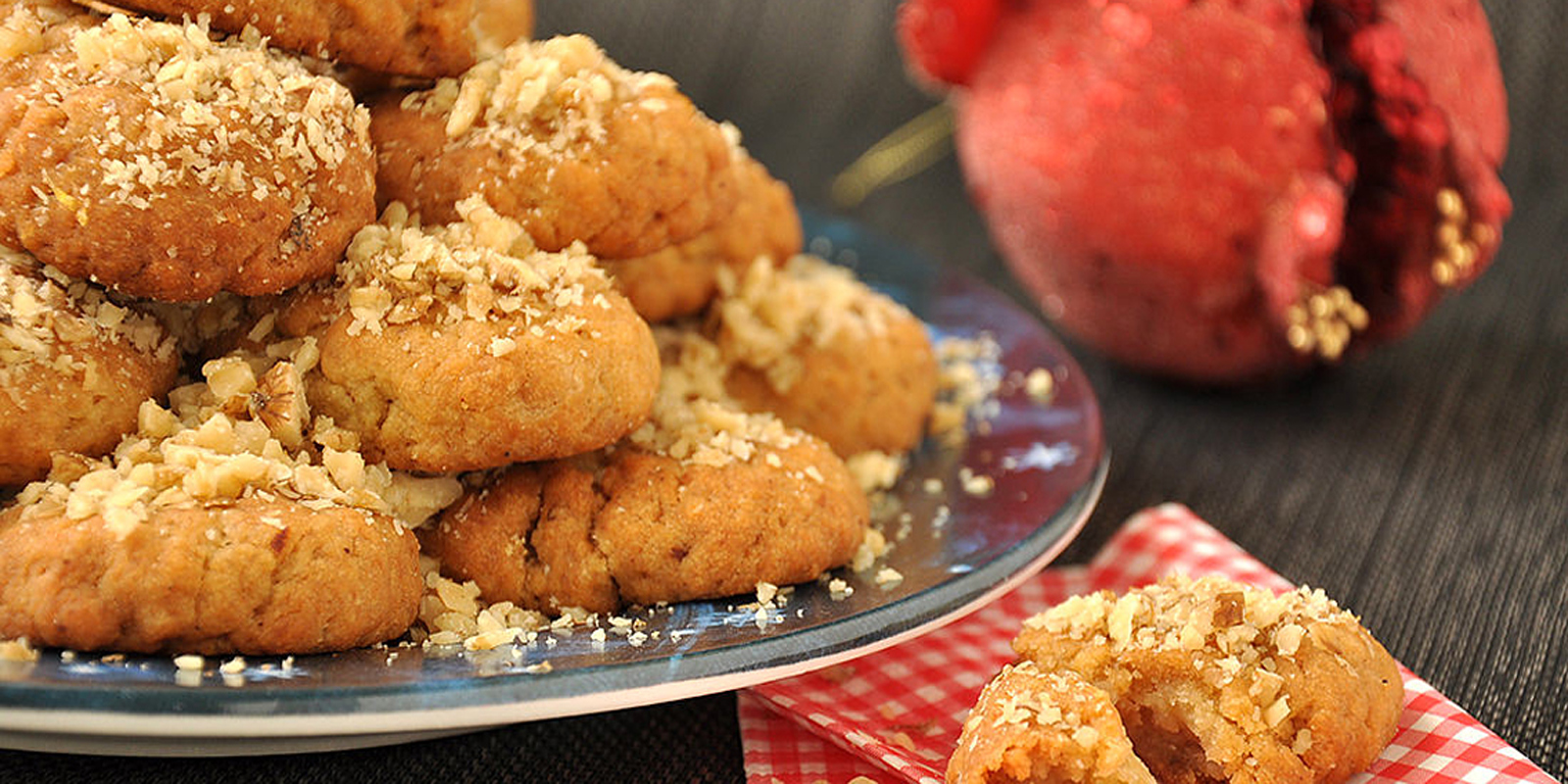
Melomakarona
Melomakarona: Greek Christmas Honey Cookies stuffed with dates andnuts. Along with the Kourabies it is a traditional dessert prepared primarily during the Christmas holiday season. Typical ingredients of the melomakarono are flour or semolina, sugar, orange zest and/or fresh juice, cognac (or similar beverage), cinnamon and olive oil. During rolling they are often filled with ground walnuts. After baking they are immersed for a few seconds in hot syrup made of honey and sugar dissolved in water. Finally, they are decorated with ground, as well as bigger, pieces of walnut. Dark chocolate-covered melomakarona are also a more recent variation of the traditional recipe. -
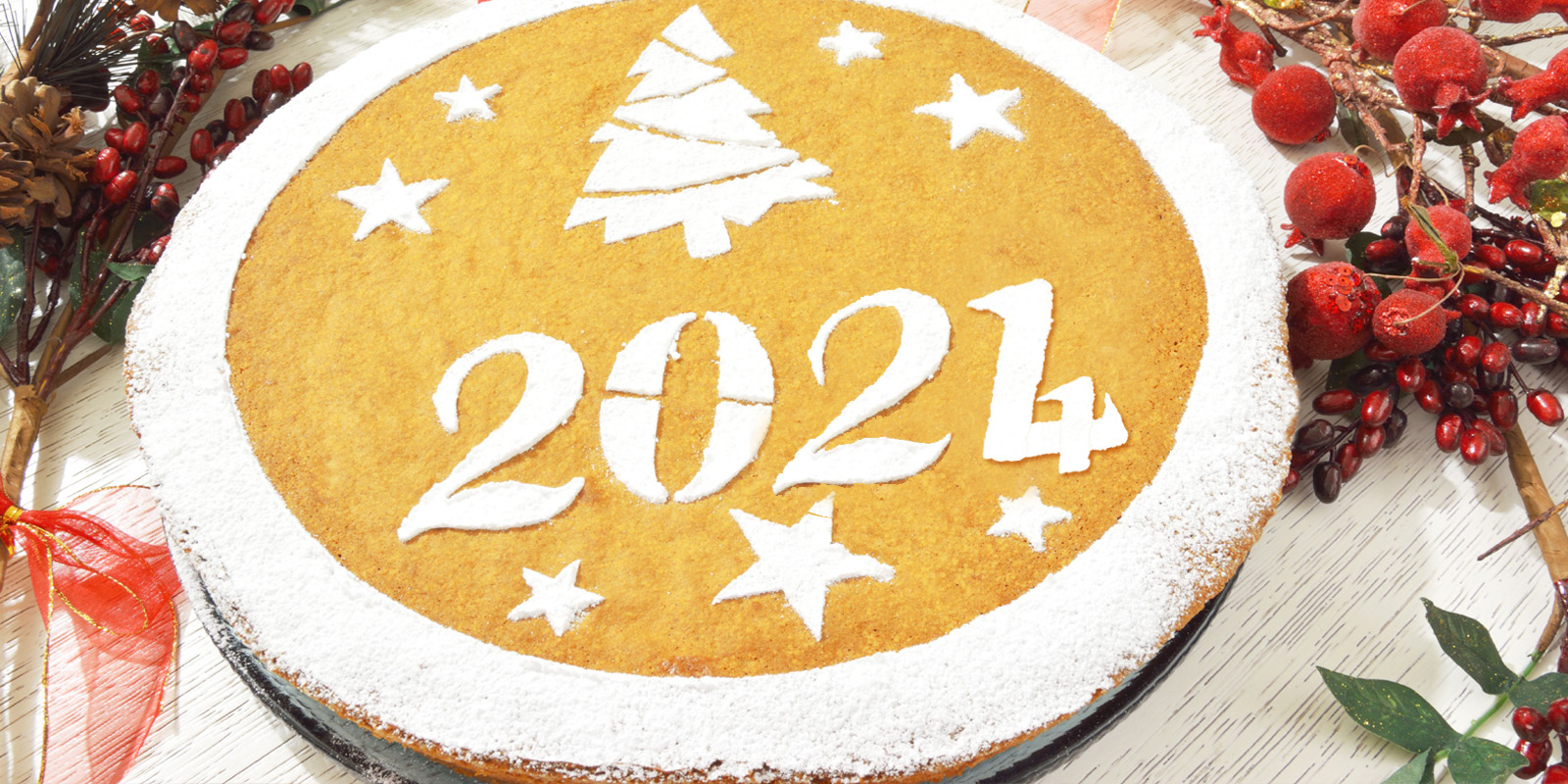
Vasilopitta
Vasilopitta is a traditional cake which is made on the, 1st of January every year especially for Ayios Vasilios. They cut it into pieces and one piece has a coin inside. The person who finds it, is believed to be lucky for the rest of the year. -
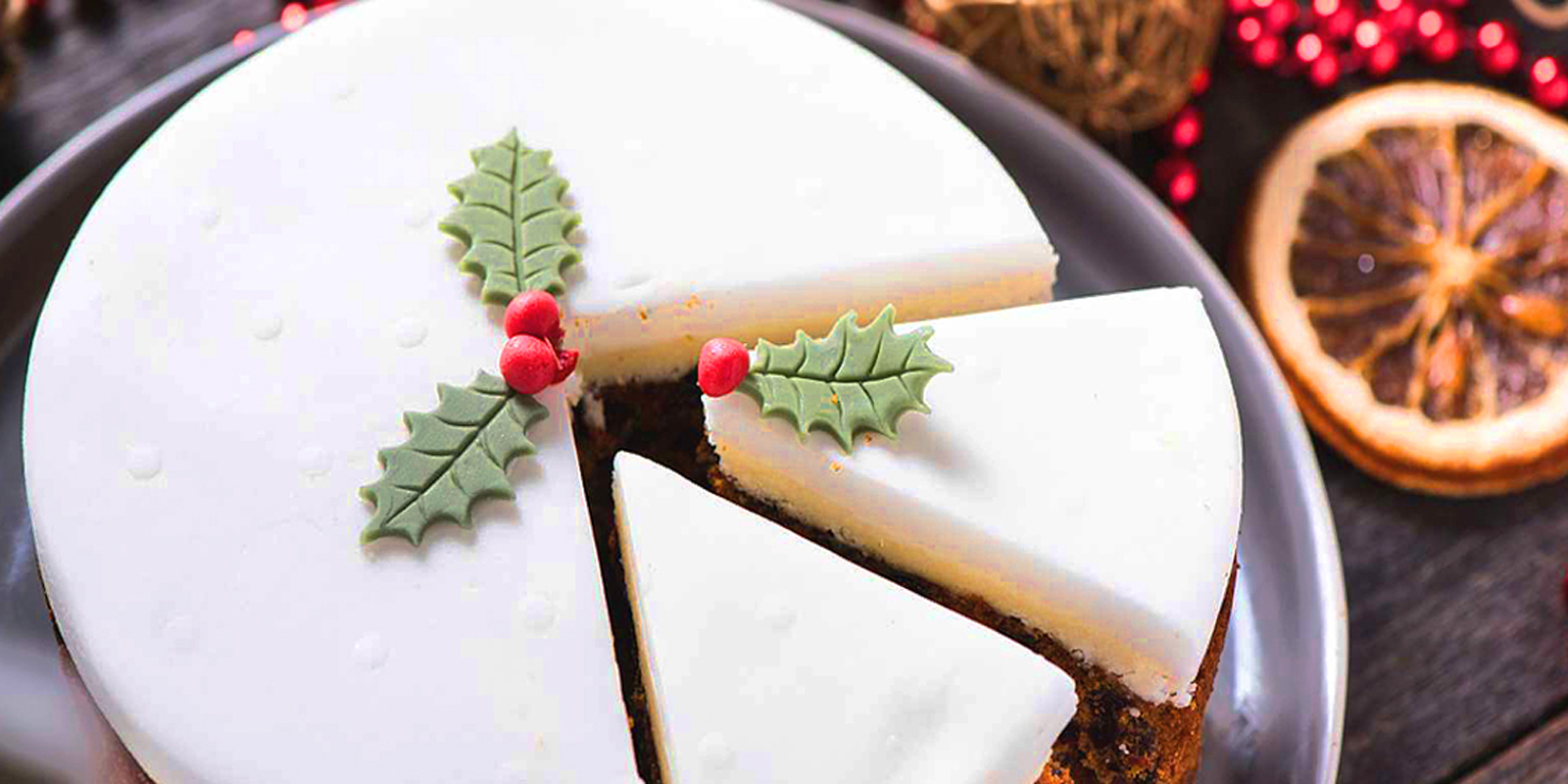
Christmas Cake
Every housewife prepares a “Christmas Cake” which decorates the Christmas table for many days. It’s a cake made with a lot of dried fruit and nuts. On the top of it, white icing is spread which represents snow. It is decorated with various Christmas decorations. We also make some
Traditional Foods
-
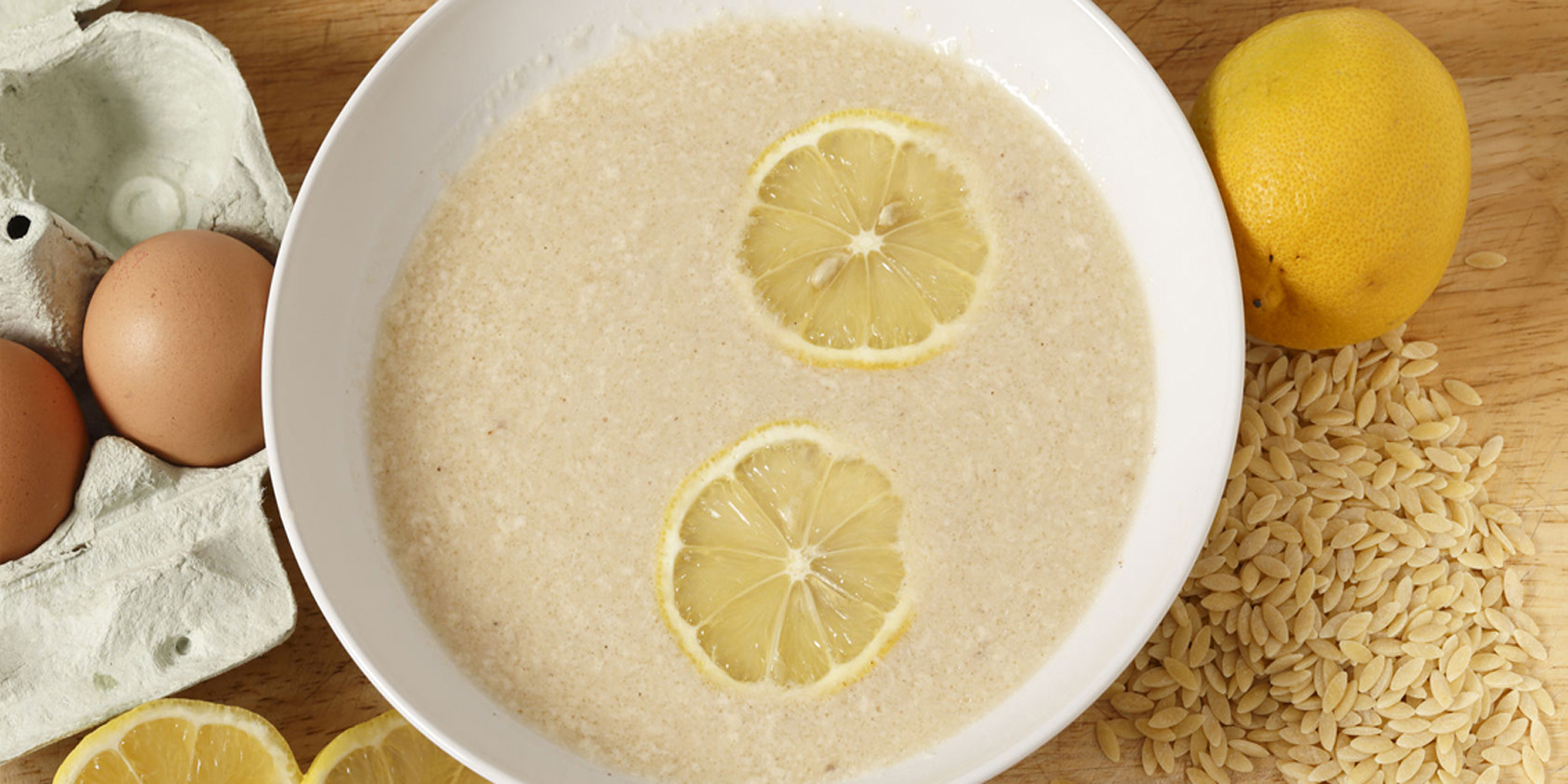
Egg Lemon Soup
On Christmas day people go to church. After that, they go to their houses and all the family sat in the table with their best men and ate pork meat, soup of frumenty or soup of egg lemon, in a cheerful pleasant and festival familial environment. -
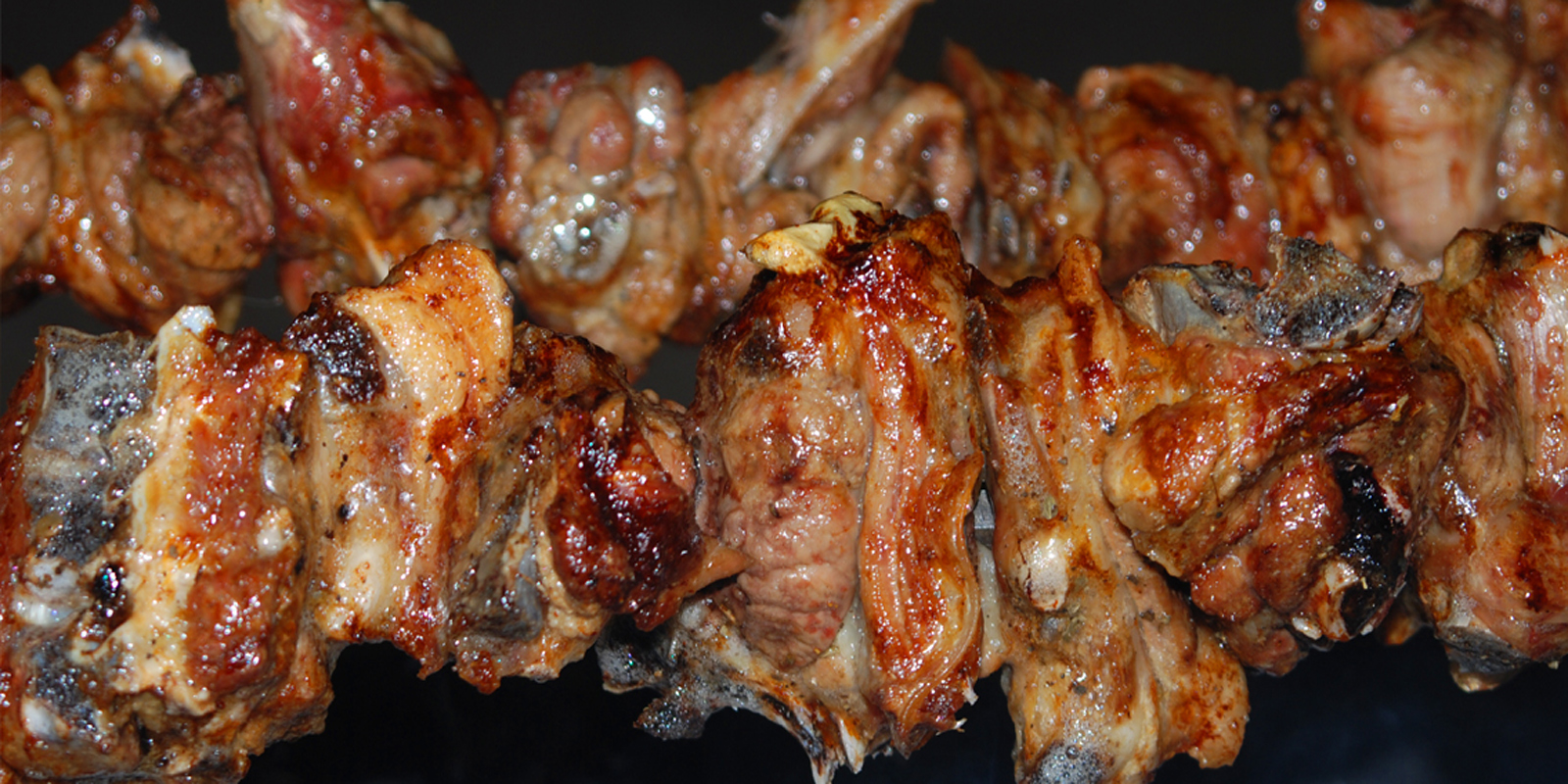
Souvla
The time for family gatherings and holiday meals. Dishes such as stuffed turkey ,or “Souvla” which is roasted lamb or pork meat cooked on charcoal, are traditionally eaten on Christmas day. -
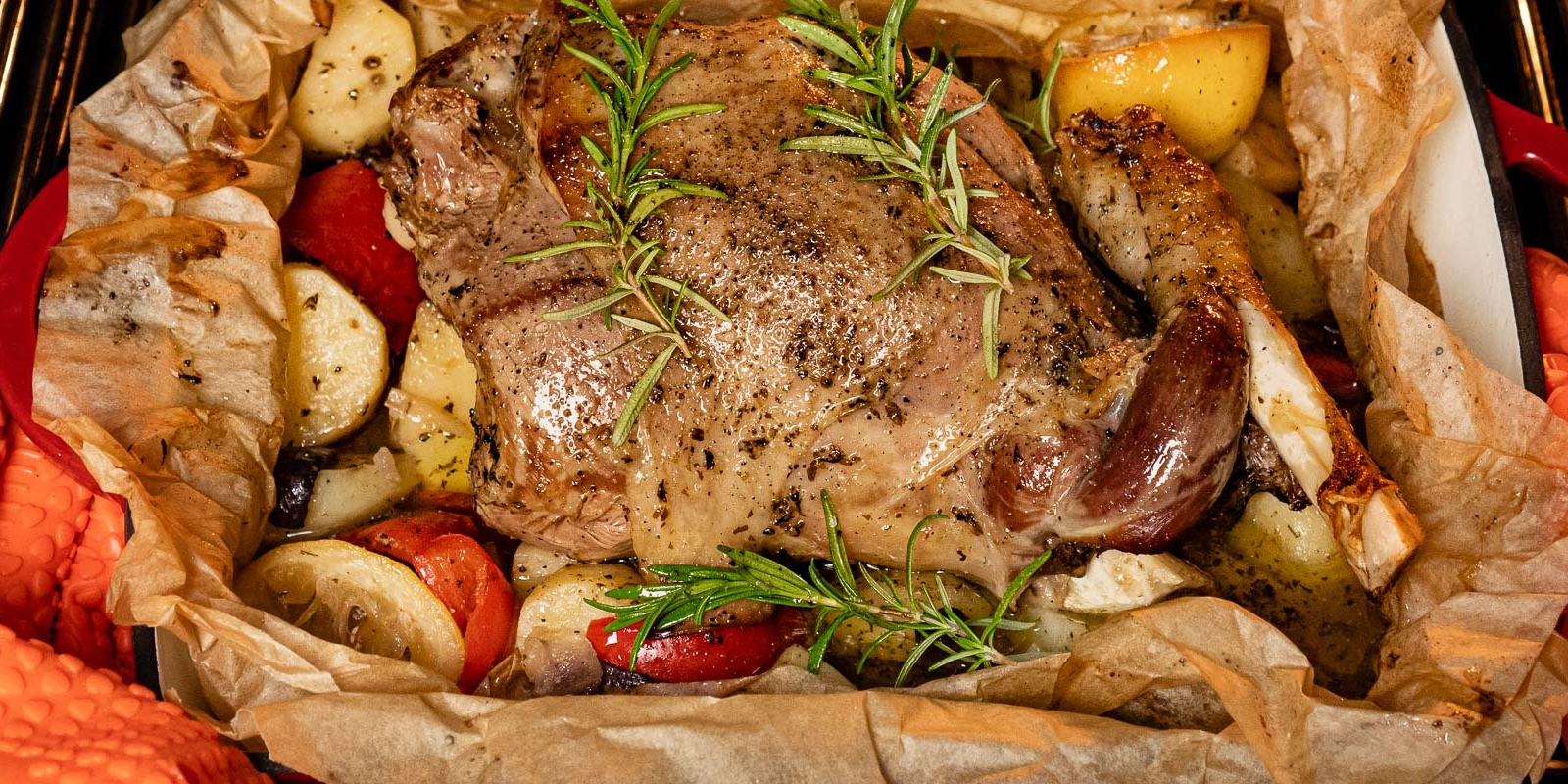
Lamb – Kleftiko
Kleftiko is a tender and hearty lamb dish that is a standard part of traditional Greek cuisine. Flavor is infused through a long and slow marinade that usually includes garlic, cinnamon, and lemons.
While the most traditional Kleftiko is prepared using a bone-in leg of lamb, there are many different styles of preparing the meat that have long and gentle cooking in common.
Legend has it that lamb Kleftiko, meaning stolen lamb or lamb in the style of the klephts, originated in the thievery of bandits known as the klephts. -
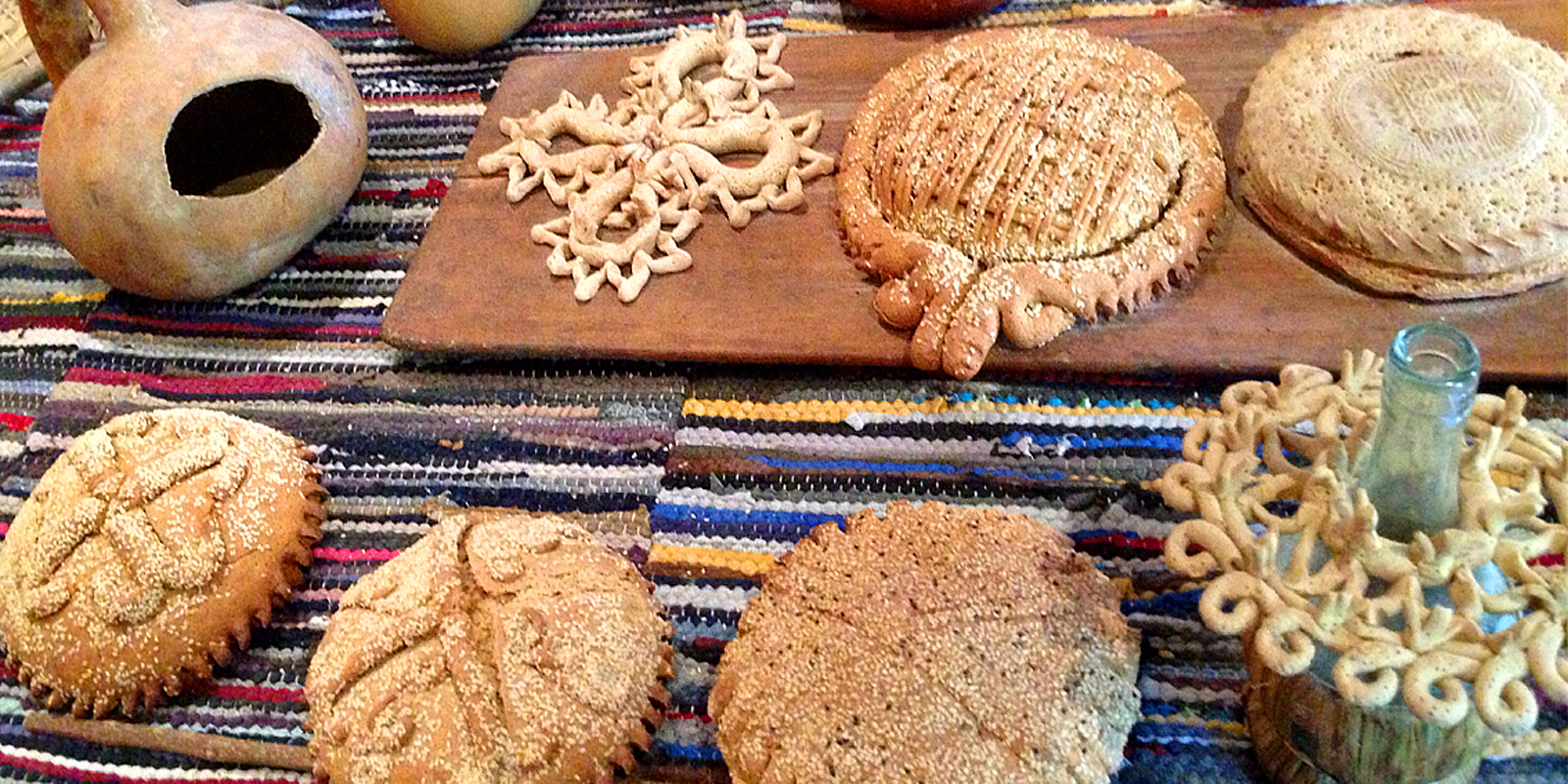
Gennopitta
On Christmas Eve women in Cyprus knead a special bread called “gennopitta“ known as“Christopsomo”. Christopsomo is eaten on Christmas day. This bread is a sweet yeast bread, and is characteristically decorated with the symbol of the cross.
Village Traditions
-
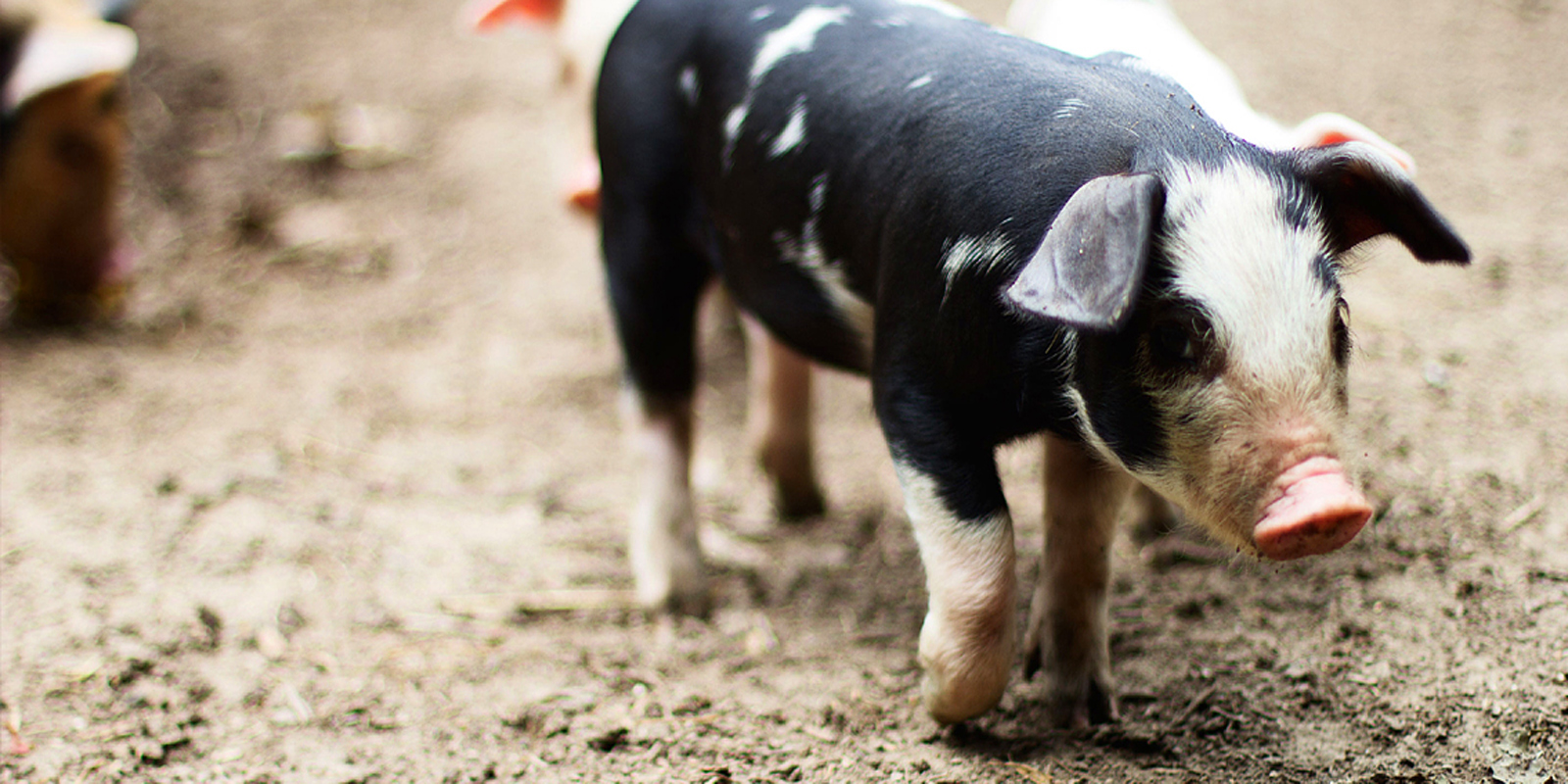
A little pig
for ChristmasIn the villages of Cyprus each family used to buy a little pig on Palm Sunday, in spring. 2-3 days before Christmas this pig was slaughtered and cut into pieces. Some of pieces were put in wine, together with salt, coriander and hang to make smoked meat or sausages to eat them on Christmas Day. -

Olive Game
A common village tradition is to cross a leaf of olive tree by a fireplace and then, after making a wish to Saint Vassilis, toss it into the fire. Before tossing the dry leaf into the flames, you would say ” Saint Vassili King, show and illuminate if I am loved by…and then you name whoever’s love you are hoping for. If the leaf jumps up after you dropped it in the fire, then that means the person loves you. If not, you try again. -
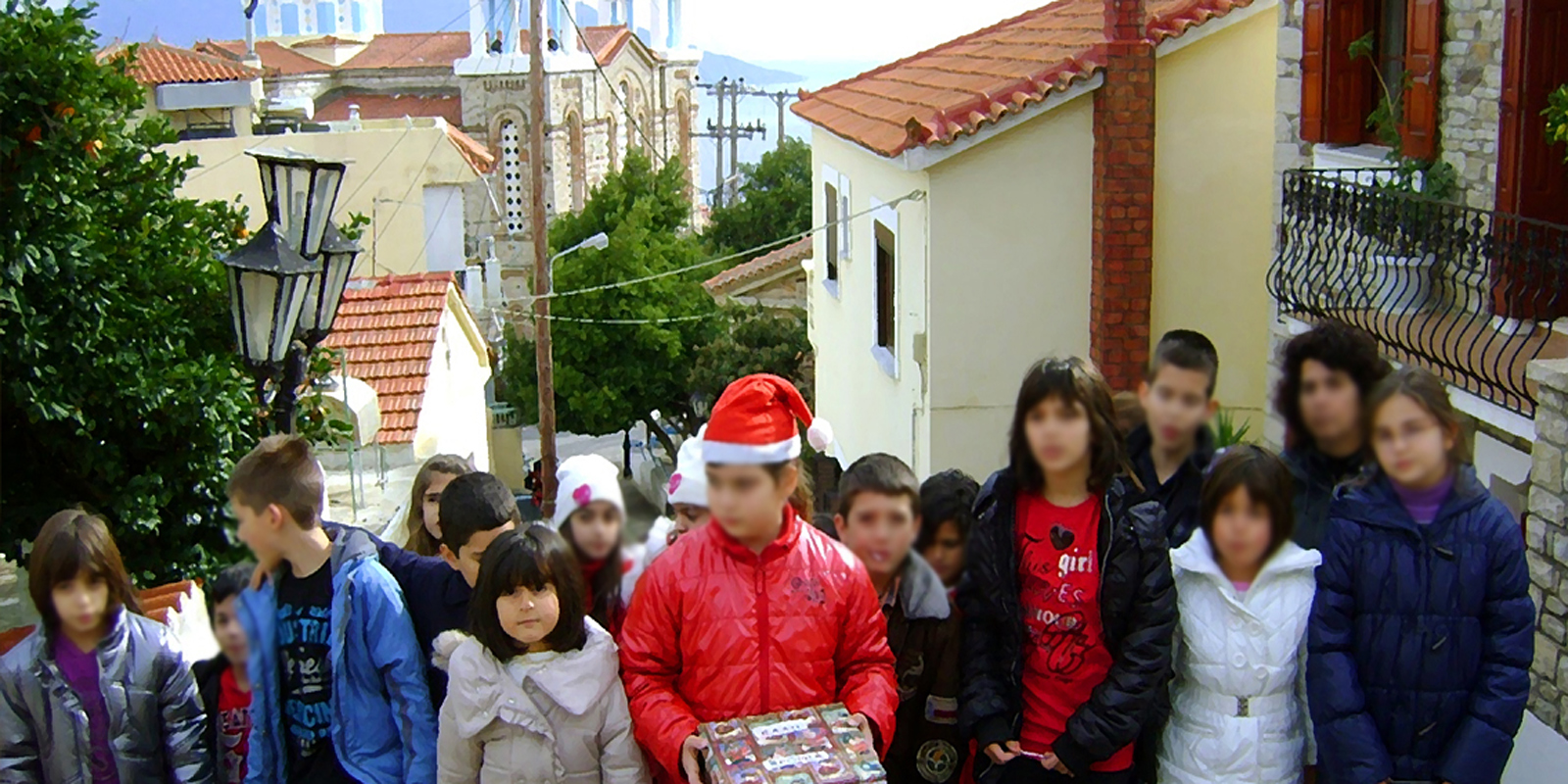
Kalanda
During the Christmas period we sing carols called “kalanda“ which have been handed down from Byzantine times. These Carols are usually sung , by children and teenagers who go round their neighborhood in groups .The house owners give some money and some sweets. -

Saint Vasilis Day
In Cyprus children used to get their presents on New Year’s Day as this day is also Saint Vasilis Day. Saint Vasilis is the children’s favorite Saint because he always comes with a bag full of presents. So on New Year’s Eve, after the children had gone to bed, their mother puts under the Christmas tree a piece of vasilopitta and a glass of wine for Santa. The children wake up early in the morning to open Santas presents. -

Loukoumades
On Epiphany Day, housewives baked “kserotiana” or “loukoumades” which is a kind of doughnut. They used to throw some doughnuts on the houses’ roofs so bugbears, or else “kalikantzaroi”, would eat and leave. After Mass, the village’s priest went around all the houses and sprinkled people with holy water. This custom is known as “Kalanta”. He was accompanied by a child who held the container with the holy water. All people would throw some coins in the container, as a gift to the priest. All children went around the houses singing, in order to gain some money, known as “ploumisma” in the Cypriot dialect.
 Cities/District
Cities/District Monasteries
Monasteries Unesco Churches
Unesco Churches Food & Drink
Food & Drink  Limassol to Nicosia
Limassol to Nicosia Famagusta to Machairas
Famagusta to Machairas Kourion to West Akamas
Kourion to West Akamas Hotels
Hotels Villas
Villas Agrotourism Accommodations
Agrotourism Accommodations Flights
Flights Rent a Car
Rent a Car

